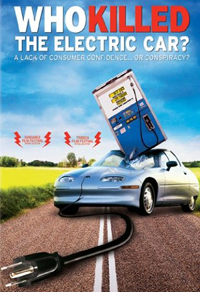Improving Your Signature Film Style
What separates great documentaries from mediocre ones? A good story, certainly, or at least a well-designed structure.
But equally important, since film is a visual medium, your documentary’s signature style, or “look”, can make or break its appeal.
If you’re like most filmmakers, you’ve probably already adopted some standard stylistic choices including interviews, vérité footage, and possibly title cards.
But how can you improve upon a signature style that will not only make your film stand out for funders, but reinforce your film’s message for viewers?
In my Inner Circle, I recently worked with a filmmaker to brainstorm an animation design that will reinforce the film’s structure. The structure examines one by one various groups of people and how they benefited from a public housing experiment. (You’ll find a similar structural design, complemented by a graphic style, in Chris Paine’s “Who Killed the Electric Car?”)
Look closely at an episode of the successful “Eyes on the Prize” series, and you’ll notice that every interview features a bit of greenery in the frame’s composition. Why? To accent the setting of the civil rights movement, the lush green South.
Consider the direct-camera address used in two vastly different documentaries, Errol Morris’s “Fog of War” and Rhonda Byrne’s “The Secret”. Although the films differ widely in sensibility, they both rely on direct-camera address to bridge the distance between public figures and private, everyday viewers. This was a conscious stylistic decision.
Designing your film’s stylistic palette requires focused concentration and brainstorming sessions with your creative team. Be patient. A signature style often takes several months to develop.
In my 6-month Inner Circle program, filmmakers develop a strategic structure, stylistic look, and sometimes soundscape, for their works-in-progress.
While not all filmmakers choose to collaborate on a stylistic strategy, the results can set your film apart.
Our story consulting client Tiffany Shlain is one of the best collaborative directors I’ve ever met. In her recent Sundance hit “Connected” (www.facebook.com/connectedthefilm) Shlain favored found footage, which reframes the past, and high-end futuristic animation, to imagine the potential of technology.
In the hopes of sparking your imagination, here are more examples of conscious stylistic devices.
Imagine last year’s Oscar-winning film “The Cove” without the nighttime photography and the fixed, wide-angle, hidden camera shots.
Can you envision a Werner Herzog film without its rhapsodic soliloquies?
How would such theatrical features as “Man on Wire” or “Enron: The Smartest Guys in the Room” fared at the box office without elaborately directed reenactments?
When considering stylistic choices, choose strategies that support your film’s message. For example, in “Sing Faster”, director Jon Else use time lapse photography and two-way radio “wild sound” to convey the stagehand’s extraordinary, labor intensive undertaking in building an epic eight hour opera production.
“Chicago Ten” used groundbreaking, realistic rotoscoping animation to portray a famous 1969 court case, for which no footage existed, only transcripts.
“American Teen” used a different style of whimsical animation to convey the fantasy life of adolescents.
Finally, don’t forget your audio design. Strive to make it unique. MTV’s Lauren Lazin conceived of “Tupac: Resurrection” as relying solely on the voice of the famous rapper himself, which showcased his poetic language.
What message do you want to stress through your film’s stylistic choices?
As you ponder this question, consider joining our next Inner Circle, beginning October 15. We’ll incubate not only your film’s story structure, but also your film’s unique stylistic look and sound.
If you’re in preproduction or shooting, we’ll develop a unique cinematic strategy to evoke your film’s central message.
If you’re already in postproduction, we can experiment with pickup shoots, graphics, and editing style to find your film’s signature look.
Then we’ll workshop your ideas through your accountability partner, six monthly mastermind calls, and three in-depth consultations with me.
E-mail me today if you are interested. The early bird pricing ends September 30. And I’m only accepting five filmmakers. To learn more go to:
